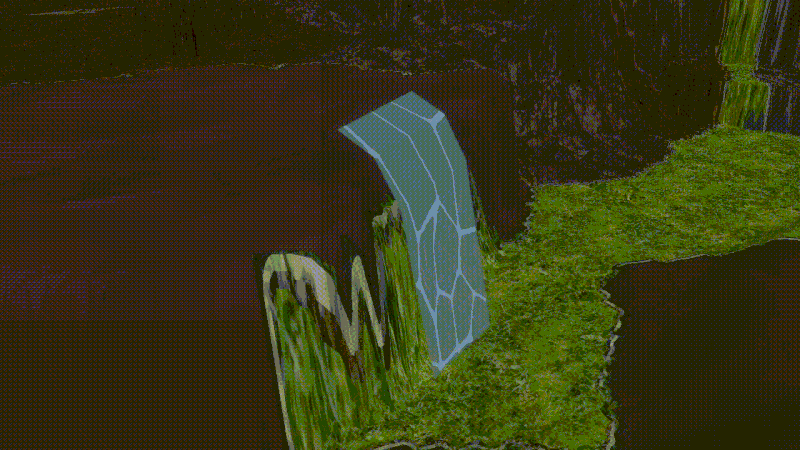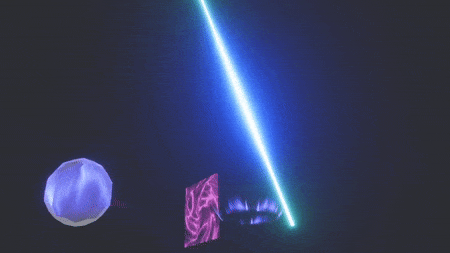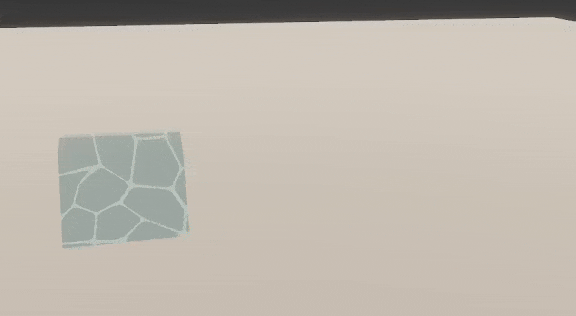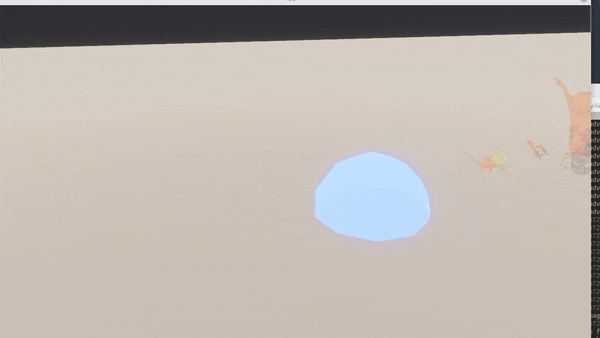33 releases
Uses new Rust 2024
| 0.16.0 | Apr 27, 2025 |
|---|---|
| 0.15.5 | Feb 16, 2025 |
| 0.15.3 | Dec 30, 2024 |
| 0.15.0 | Nov 29, 2024 |
| 0.2.9 | Mar 13, 2024 |
#188 in Game dev
347 downloads per month
4.5MB
1K
SLoC
Bevy Magic Fx
Define mesh-based VFX in RON files and load them into bevy
Quickstart
cargo run --example preview
(if it fails to load, try to delete or move all of the magic_fx_variants assets to another folder except light_sparkles.magicfx.ron. Or fix them by importing your own textures. )
How to install
- Add this plugin to your bevy application
app .add_plugins( MagicFxPlugin )
- Load and register your shader variants from files
let shadvar_name = & shader_variant_manifest.name;
let shader_material_handle = animated_materials.add( build_animated_material(
shader_variant_manifest, // the ron file parsed
&texture_handles_map
).unwrap()
);
asset_loading_resource.animated_material_map.insert(
shadvar_name .clone(),
shader_material_handle );
- Load and register your magic fx variants from files
let magic_fx_variant_manifest: &MagicFxVariantManifest = fx_variant_assets
.get(&asset_handles_resource.magic_fx_variant_manifest_handle)
.unwrap();
let mesh_handles_map = &asset_loading_resource.mesh_handles_map;
let animated_materials_map = &asset_loading_resource.animated_material_map;
let magic_fx = MagicFxVariant::from_manifest(
magic_fx_variant_manifest, // the ron file parsed
&mesh_handles_map,
&animated_materials_map,
).unwrap();
//save the variant for later spawning ..
asset_loading_resource.loaded_magic_fx_variants.insert(
magic_fx.name.clone(),
magic_fx );
- Spawn your magic fx variants whenever you want
let _magic_fx_root = commands
.spawn(SpatialBundle::default())
.insert(MagicFxVariantComponent {
magic_fx, //this is what you saved in a resource in step 3
start_time: time.elapsed(),
})
.id();
Example VFX Definition File (RON)
(
name: "magic",
magic_fx_instances: [(
shader_variant_name: "shader_variants/purple.shadvar.ron",
mesh_name: "meshes/projectile.obj",
start_time_offset: 0.0,
end_time_offset: 3.0,
start_transform: (translation: (3.0,2.0,0.0), rotation:(0.0,0.0,0.0),scale:(1.0,1.0,1.0)),
end_transform: (translation: (4.0,0.0,0.0), rotation:(2.0,0.0,0.0),scale:(1.0,1.0,1.0)),
)] ,
max_time: 5.0
)
Example Shader Variant Definition File (RON)
(
name: "purple",
texture: "textures/fire_01.png",
animation_speed: (0.5,0.1), // Assuming animation_speed is a string for some reason; otherwise, consider using a float or int
distortion_speed: (0.02,0.01),
scroll_repeats: ( 3.0,3.0),
distortion_amount: 0.02 ,
color: Rgba(
red: 5,
green: 5,
blue: 255,
alpha: 255 // Assuming your Color struct has rgba fields; adjust according to your actual Color struct
),
emissive: (
5.0,20.0,5.0
)
)
Billboarding
To use billboarding on meshes, you must insert a MagicFxBillboardTarget component to your camera.
Dependencies
~48–81MB
~1.5M SLoC



